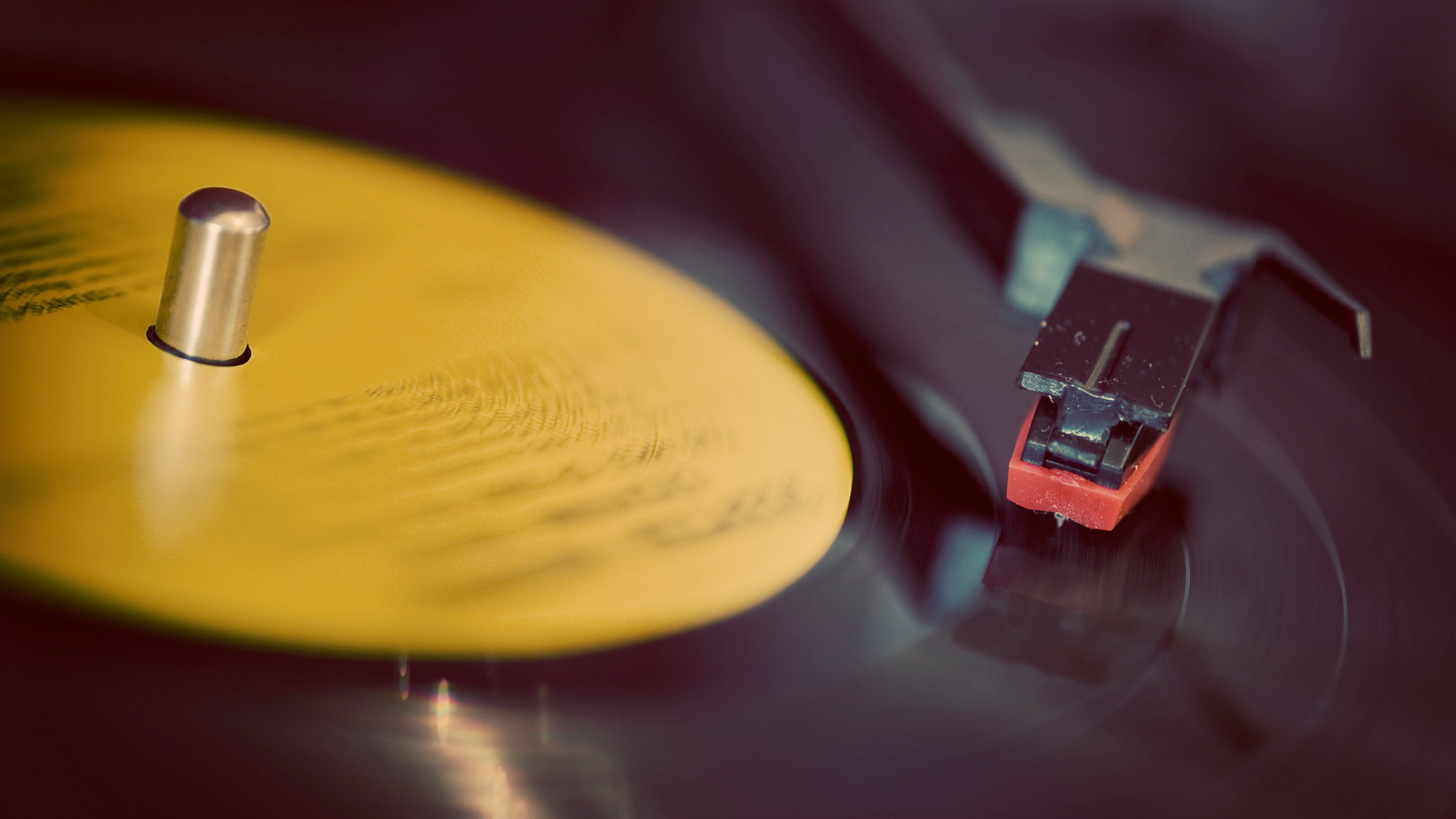“We have the YouTube generation to thank for its explosion”: Unpacking the modern lo-fi genre
Kick back as we unpick the secrets of the ultra-popular aesthetic

Lo-fi: it’s a term that’s become inescapable in 2024. This vibe-based musical style, which has gained millions of streams via various study and focus playlists, is not to be confused with the traditional attribution of the term. Originally dating back to the 1960’s, the expression ‘lo-fi’ was first used to define a rising trend in imperfect, incomplete or shabbily recorded releases from artists such as The Beach Boys’ (particularly their twelfth studio album, Smiley Smile) and Paul McCartney’s eponymous 1970 solo debut, which was recorded at home.
Though the term 'lo-fi' was thrown around, back then, it was more of a descriptor of a no-frills sonic aesthetic than any sort of blossoming genre. The threadbare recording approach reached something a pinnacle in the early 1990s, when the slacker-attitude of artists like Pavement and Beck was underlined by a DIY recording style that was charmingly free of big budget production finesse.
But, this type of lo-fi is a far cry from the hypnotic, cosy, nostalgic and warm sounds that you’ll now find dominating those ubiquitous lo-fi playlists. Some of today’s leading lights in the field are self-releasing artists such as Purrple Cat, Yasumu and Jhove, all of which share a penchant for a style that meshes elements of downtempo, dream-pop and hip-hop with a characteristic homemade quality.
While that older lo-fi-tinged music could be quite abrasive, today's lo-fi's concern is to place listeners into a certain mood - enhance their focus or set them into a breezy, carefree mental state. Stylistically, it blurs the lines between electronic music, jazz and hip-hop, cribbing the chordal flavours favoured by many of the earliest sample-based hip-hop acts with the dreamier washes of synth-pop.
Really, we have the YouTube generation to thank for modern lo-fi’s explosion, with numerous live-streaming playlists gradually starting to appear from the turn of the 2010s onwards. This really ballooned when YouTube introduced continuous streaming in 2013.
These playlists could - and still can - run to thousands of hours long, and therefore became perfect, accompaniments to studying, working or just shutting your eyes after a long day at school or work. They reached a notable boom during Covid. A time where we all had to face long hours of wallowing in our own isolation - whether we wanted to or not.
These days, the term lo-fi has lost its association with those alternative acts of yesteryear, and now firmly conjures these types of functional listening experiences in the public consciousness.
One of the most popular streamers, 'Lofi Girl', first began broadcasting unbroken compilations of lo-fi tunes in 2021. The channel uses a partially animated image created by artist Juan Pablo Machado of a manga-style girl hard at work, this has become perhaps the most recognisable visual signifier of the genre.

Lo-Fi: Key Elements
What are the key elements of lo-fi?
Let's break down the core elements that define a typical lo-fi track. While artists might vary their compositional toolkit, some fairly standard ingredients you’ll find cropping up frequently on any lo-fi playlist will include:
1: Beats
At the heart of the majority of lo-fi is a beat, this is commonly ultra-simple (limited fills and time signature variation) and sets the slow, meditative pace of the track.
There’s undoubtedly a BPM sweet spot for lo-fi somewhere between 60-80bpm, anything more than that and the track can feel a little too intense, while slower can creep more into the ambient domain (see ambient lo-fi). We're nearly always in 4/4 here.
The steady pulse of the beat is essential, and snare, kick and hi-hats are vital drum components to have in play. Typically sub-frequencies and low-end information is filtered out, so the throb of the kick doesn’t become too oppressive.
Fills and human-like performance should be avoided, but so also should perfectly synchronised, snapped-to-grid patterns - you want to keep things relatively loose but resigned and steady in terms of energy. There’s a mountain of sample packs which will provide you with the raw material for your lo-fi beat. Not to mention our very own free collection.
Want all the hottest music and gear news, reviews, deals, features and more, direct to your inbox? Sign up here.
2: Synths
Often what defines a lo-fi track is a sense of enveloping warmth, smothering the listeners ears. Warm, crackly synth pads can deliver this in spades.
As well as being comforting to listen to, cushiony synth pads can also serve as the primary dictator of harmony, or the track’s chord structure. The chords themselves are quite often on the jazzier front, with lots of emotionally neutral sevenths and straighforward progressions (e.g: ii-V-i and V-i).
Synth leads tend to be treated with reverb and spatial effects to isolate them further from the rhythm section. More traditional synth lead parts can tip your track into the 'vaporwave' domain (see our breakdown of lo-fi subgenres, later).
3: Ageing and distressing
When you think of the lo-fi genre, you're predominately going to think of a sound characterised by hiss, saturation, crackle, hum and digital processing errors (or a reduced bitrate). These elements can transport the listener back in time to a time when information and playback errors like this were the norm, or an imagined, stylised version of the past.
This type of treatment is core to the genre’s sense of timeless nostalgia - evoking an era of unreliable playback apparatus as well as the much cited ‘warmth’ of classic analogue gear and recording techniques.
4: Reverb/delay
A sense of space and sample-colouration via delay is commonly found in today’s lo-fi. While you don’t want your lo-fi track to be overly smothered in spatial effects, a light touch can enhance the sense of the track being played within a space (particularly if it accompanies a visual of a location, on a YouTube playlist) this can enhance the mood and evoke the feeling of loneliness and isolation.
5: Samples
Mentioned earlier, jazzier chords, played by samples of real instruments (clean guitar, organ, or piano) can be pivotal to nailing this genre. The use of regularly repeating samples (ideally aged and treated) will add to the repetitious lull that you’re wanting to get across, and sending the listener into something of a hypnotic - or hyper-focused - state.
6: Production
The key aspects to remember in your lo-fi mix is to welcome imperfections and daube everything with the hazy, rickety qualities described above (particularly hum, wobble, crackle and lower-fidelity attributes). Tape emulation plugins can be your friend here
Keep your chord sequences fairly neutral – no dramatic choruses or hard, unexpected swings. Keep a steady plod, and interweave the more emotional melodic elements with subtlety.
Your mix should be free of extremes too, no booming low end or ear-piercing leads, your EQ bands should be fairly mid-range-accentuating throughout.
Sub-Genres
Some key lo-fi sub-genres
Vaporwave
The sub-genre known as ‘vaporwave' is characterised by an increased reliance on wonky, VHS-like analogue distortions, as well as digital glitches and 'aspirational' type melodies. It's typically juxtaposed with imagery that evokes a longing for a future imagined by people living in the 1980s or 1990s. It also adds in many of the lo-fi elements described above into its stew, and has generated a thriving sub-community.
Lo-fi house
This spin on lo-fi incorporates more aspects traditionally associated with house music. Faster-paced upbeat rhythms and a generally more positive strand of melodic content is processed with many of the same techniques as described above, while vocals are often more likely to appear.
Future funk
Growing out of the vaporwave movement, future funk takes elements from classic disco tracks of yesteryear and constructs new, retro-tinged arrangements, with many of the same aesthetic and sonic qualities of the aforementioned sub-genres.
The key difference is, that instead of lulling the listener into a neutral, relaxed state, future funk intends to trigger joy. It also takes some cues from 80s British synth-pop. You’ll often find a lot of anime imagery in the videos of future funk artists…
Ambient lo-fi
Melding the qualities of lo-fi with a cinematic, glacial aesthetic, ambient lo-fi is usually slower paced and more heavily reliant on sound design techniques and evolving sounds than the often quite dusty, dry loops of its parent genre. These sonic qualities are typically spaced out in the mix, creating a feeling of desolation which can put the listener in a wide variety of moods.
Chillhop
Perhaps the biggest of the lo-fi sub-genres (and all-too-often confused with the parent genre) but chillhop make a case for its distinctiveness by having a generally cleaner production (vinyl crackles and lo-fi elements are used sparingly) as well as - something common with many of these sub-genres - a more life-affirming bent. There's also a more traditional reliance on hip-hop's rhythmic structure.

I'm Andy, the Music-Making Ed here at MusicRadar. My work explores both the inner-workings of how music is made, and frequently digs into the history and development of popular music.
Previously the editor of Computer Music, my career has included editing MusicTech magazine and website and writing about music-making and listening for titles such as NME, Classic Pop, Audio Media International, Guitar.com and Uncut.
When I'm not writing about music, I'm making it. I release tracks under the name ALP.




